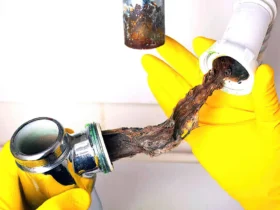Renting out a house can be a great source of income, but it also comes with responsibilities and legal obligations. Whether you’re a first-time landlord or a seasoned property owner, having a comprehensive Landlord Checklist for Renting a House ensures a smooth rental process and protects your investment. Here’s everything you need to know before handing over the keys.
1. Understand Landlord-Tenant Laws
Before listing your property, familiarize yourself with local, state, and national laws regarding rental properties. These include regulations about security deposits, eviction processes, fair housing laws, lease agreements, and property maintenance. Staying compliant helps you avoid legal disputes and penalties.
2. Prepare the Property
Your home should be clean, safe, and fully functional before you start showing it to prospective tenants. Key preparations include:
- Cleaning thoroughly (carpets, windows, appliances, etc.)
- Checking and repairing plumbing, electrical systems, and HVAC
- Ensuring all smoke and carbon monoxide detectors work
- Fixing structural issues (leaky roofs, cracked walls, etc.)
- Changing locks or rekeying doors for security
A well-maintained property attracts better tenants and allows you to charge a competitive rent.
3. Set a Competitive Rental Price
Research similar rental listings in your area to determine a fair and competitive price. Consider location, size, amenities, and property condition. Overpricing can lead to longer vacancy periods, while underpricing might reduce your ROI.
4. Create a Solid Lease Agreement
A clear and detailed lease protects both parties and prevents misunderstandings. It should include:
- Rental amount and due date
- Security deposit terms
- Length of lease
- Rules regarding pets, smoking, and property use
- Maintenance responsibilities
- Entry notice requirements
Consult a lawyer or use a state-approved template to ensure your lease is legally sound.
5. Screen Tenants Carefully
Finding reliable tenants is key to a successful rental experience. Always:
- Require a rental application
- Run credit and background checks
- Verify employment and income
- Contact previous landlords for references
This process helps reduce the risk of late payments, property damage, or evictions.
6. Collect Security Deposit and First Month’s Rent
Before the tenant moves in, collect a security deposit (within legal limits) and the first month’s rent. Clearly document the condition of the property with photos and a move-in inspection checklist, which both parties should sign.
7. Establish a Maintenance Plan
Be proactive about maintenance. Respond quickly to repair requests, perform regular inspections (with notice), and schedule seasonal upkeep (e.g., gutter cleaning, HVAC servicing). This not only keeps tenants happy but also preserves your property’s value.
8. Have Proper Insurance
Landlord insurance is different from homeowners insurance. It covers property damage, liability, and lost rental income due to covered events. Encourage your tenants to purchase renters insurance to protect their personal belongings.
9. Use Property Management Tools or Services
If managing the rental becomes too time-consuming, consider hiring a property manager or using property management software. These tools can assist with rent collection, maintenance tracking, and communication.
Final Thoughts
Renting out a house involves more than just finding a tenant. With a comprehensive checklist, you can ensure that your property is legally compliant, well-maintained, and financially rewarding. Taking the time to do things right at the start can save you headaches and money in the long run.





